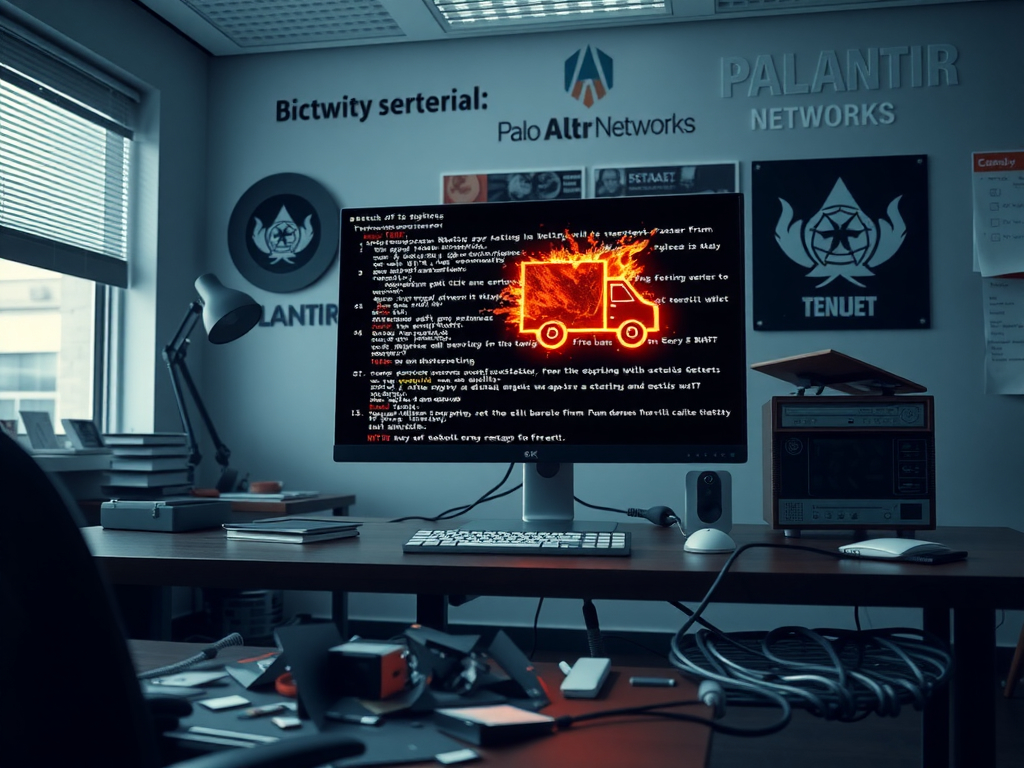Threat Report: JS Fire Truck Exploring Malicious JavaScript Using JSF*ck as an Obfuscation Technique
Security Operation Center Threat Report
Published by CyberHunter_NL on June 13, 2025
Confidence Level: 100% | Reliability: Completely reliable
- Executive Summary
A recent threat report published by Palo Alto Networks has shed light on a large-scale infection campaign that is compromising legitimate websites with injected, obfuscated JavaScript code. This campaign, dubbed ‘JS Fire Truck,’ employs JSF*ck as an obfuscation technique to evade detection and facilitate malicious activities. The findings of this report are critical for understanding the evolving landscape of cyber threats and implementing effective countermeasures. - Threat Overview
The JS Fire Truck campaign represents a significant escalation in the use of JavaScript-based malware. By leveraging JSF*ck, attackers can hide their malicious code within seemingly benign scripts, making it difficult for traditional security measures to detect and mitigate these threats. The injected JavaScript is designed to exploit vulnerabilities in web applications, leading to data breaches, unauthorized access, and other forms of cybercrime. -
Technical Details
The JS Fire Truck campaign involves several key technical components:
– Obfuscation Technique: JSF*ck is used to transform readable JavaScript code into an obfuscated form that is challenging to analyze.
– Injection Method: The malicious JavaScript is injected into legitimate websites, often through compromised third-party scripts or vulnerabilities in content management systems (CMS).
– Payload Delivery: Once the obfuscated code is executed on a victim’s browser, it can download and execute additional payloads, such as information stealers or ransomware.
– Command and Control (C2): The injected JavaScript establishes communication with a remote C2 server to receive further instructions and exfiltrate data.
- Attacker Tactics, Techniques, and Procedures (TTPs)
Understanding the TTPs used by the attackers is crucial for developing effective defense strategies:
- Initial Access: Attackers gain initial access through vulnerabilities in web applications or third-party scripts.
- Execution: The injected JavaScript is executed within the victim’s browser, often without their knowledge.
- Persistence: The malicious code may persist across browsing sessions, ensuring continuous exploitation.
- Command and Control: Communication with a remote C2 server allows attackers to maintain control over compromised systems.
- Impact Assessment
The JS Fire Truck campaign poses significant risks to both individuals and organizations:
- Data Breaches: Sensitive information can be stolen from compromised websites.
- Unauthorized Access: Attackers may gain access to internal networks and systems.
- Financial Loss: Cybercriminals can exploit vulnerabilities for financial gain, leading to direct losses or reputational damage.
- Recommendations
To mitigate the risks associated with the JS Fire Truck campaign, organizations should consider the following recommendations:
- Regular Security Audits: Conduct regular security audits of web applications and third-party scripts to identify and fix vulnerabilities.
- Web Application Firewalls (WAF): Implement WAFs to filter out malicious traffic and protect against JavaScript-based attacks.
- Browser Security Measures: Educate users on browser security best practices, such as disabling unnecessary plugins and keeping software up-to-date.
- Monitoring and Detection: Deploy advanced monitoring tools to detect suspicious activities and anomalies in real-time.
- Incident Response Plan: Develop and maintain an incident response plan to quickly address and mitigate the impact of cyber attacks.
- Conclusion
The JS Fire Truck campaign highlights the growing sophistication of JavaScript-based malware and the need for robust security measures. By understanding the TTPs used by attackers and implementing proactive defense strategies, organizations can better protect themselves against these evolving threats. Staying informed about emerging threats and continuously updating security practices are essential steps in maintaining a secure digital environment.
For additional information on this threat report, please refer to the following external references:
https://unit42.paloaltonetworks.com/malicious-javascript-using-jsfiretruck-as-obfuscation/
https://otx.alienvault.com/pulse/684be8f75a5359949cc71846
Please check the following page for additional information:
https://unit42.paloaltonetworks.com/malicious-javascript-using-jsfiretruck-as-obfuscation/
Discover more from ESSGroup
Subscribe to get the latest posts sent to your email.





